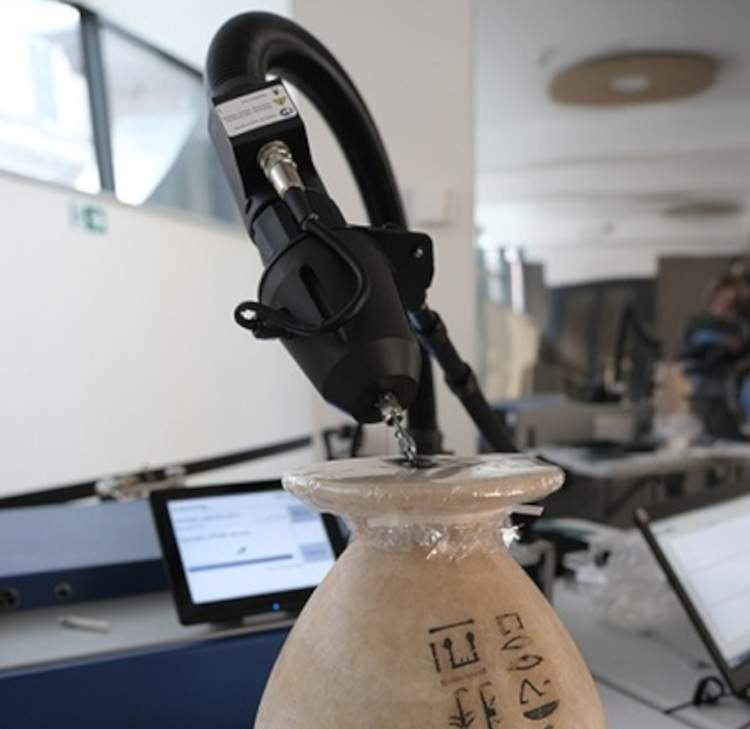Researchers from theUniversity of Pisa have investigated the contents of about fifty vases and amphorae from the tombs of Kha and Merit at the Egyptian Museum in Turin, dating back some 3,500 years, without the need to open or undermine the artifacts: in fact, they sniffed out the traces of residual organic compounds inside them using an innovative methodology they have fielded for the first time. Just published in the Journal of Archaeological Science, the work was carried out by chemists from the University of Pisa through two diagnostic campaigns performed in 2019 at the Egyptian Museum.
Resins and ointments were identified in the alabaster containers, often along with beeswax, one of the most frequently found materials because it was used both as a preservative and as a base for the preparation of cosmetics. The researchers also found dried fish and volatile molecules in the amphorae, the presence of which could be associated with barley flour or beer, as suggested by the presence of volatile compounds specific to grain fermentation.
The examination of the artifacts was carried out with a transportable SIFT-MS(Selected Ion Flow Tube-Mass Spectrometry) mass spectrometer, a machine usually employed in the medical field to quantify breath metabolites or to determine environmental pollutants, and which has only recently demonstrated its usefulness also in the field of cultural heritage to perform investigations while maintaining the integrity of the artifacts.
“This study has demonstrated the possibility of employing this kind of instrumentation directly in museums to obtain important information on numerous objects in a rapid and completely nondestructive manner,” explained Professor Ilaria Degano of the University of Pisa. “Such an approach can therefore be used in new diagnostic campaigns, and possibly in the future extended to the investigation of different materials from the field of cultural heritage, such as collections of modern and contemporary art objects.” “The application of this technique makes it possible to employ a solvent-free analysis system with benefits for the environment and the health of the operators, based on innovative instrumentation to trigger a virtuous circle with experts in the field,” concluded the professor from the Department of Chemistry and Industrial Chemistry, who worked on the research together with a team of faculty and researchers including Jacopo La Nasa, Francesca Modugno, Erika Ribechini, Maria Perla Colombini and Camilla Guerrini. The study also counts the technical support of the company SRA Instruments and experts from the Egyptian Museum who collaborated in the interpretation of the results in the archaeometric context.
 |
| University of Pisa, an innovative olfactory method to discover the contents of 3500-year-old Egyptian vases |
Warning: the translation into English of the original Italian article was created using automatic tools. We undertake to review all articles, but we do not guarantee the total absence of inaccuracies in the translation due to the program. You can find the original by clicking on the ITA button. If you find any mistake,please contact us.